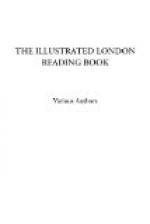He who hath bent him o’er
the dead
Ere the first day of death
is fled;
The first dark day of nothingness.
The last of danger and distress:
Before Decay’s effacing
fingers,
Have swept the lines where
beauty lingers,
And mark’d the mild,
angelic air,
The rapture of repose that’s
there;
The fix’d, yet tender
traits that streak
The languor of the placid
cheek.
And, but for that sad shrouded
eye,
That fires not—wins
not—weeps not—now;
And, but for that
chill, changeless brow,
Whose touch thrills with mortality,
And curdles to the gazer’s
heart,
As if to him it could impart
The doom he dreads, yet dwells
upon:
Yes, but for these, and these
alone
Some moments—ay,
one treacherous hour—
He still might doubt the tyrant’s
power;
So fair, so calm, so softly
seal’d,
The first, last look by death
reveal’d.
Such is the aspect
of this shore;
’Tis Greece, but living
Greece no more!
So coldly sweet—so
deadly fair—
We start, for
soul is wanting there:
Hers is the loveliness
in death
That parts not
quite with parting breath;
But beauty, with
that fearful bloom,
That hue which
haunts it to the tomb:
Expression’s
last receding ray,
A gilded halo
hovering round decay,
The farewell beam
of feeling past away!
Spark of that flame—perchance
of Heavenly birth,
Which gleams, but warms no
more its cherish’d earth!
BYRON.
[Illustration: SUBTERRANEAN CHAPEL, GREECE.]
* * * * *
THE FORT OF ATTOCK.
[Illustration: Letter A.]
Attock is a fort and small town in the Punjaub, on the left or east bank of the Indus, 942 miles from the sea, and close below the place where it receives the water of the Khabool river, and first becomes navigable. The name, signifying obstacle, is supposed to have been given to it under the presumption that no scrupulous Hindoo would proceed westward of it; but this strict principle, like many others of similar nature, is little acted on. Some state that the name was given by the Emperor Akbar, because he here found much difficulty in crossing the river. The river itself is at this place frequently by the natives called Attock. Here is a bridge, formed usually of from twenty to thirty boats, across the stream, at a spot where it is 537 feet wide. In summer, when the melting of the snows in the lofty mountains to the north raises the stream so that the bridge becomes endangered, it is withdrawn, and the communication is then effected by means of a ferry.




